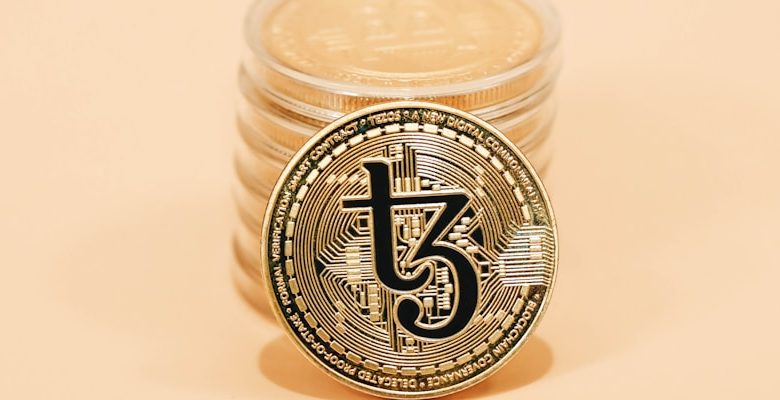Tezos (XTZ): Self-Amending Blockchain Explained

- Understanding the Self-Amending Protocol of Tezos
- A Deep Dive into the Governance Model of Tezos Blockchain
- How Tezos Enables Upgrades Without Forks
- Exploring the Benefits of Self-Amendment in Tezos
- The Evolutionary Nature of Tezos Blockchain
- Why Self-Amendment Sets Tezos Apart from Other Blockchains
Understanding the Self-Amending Protocol of Tezos
Tezos features a unique self-amending protocol that sets it apart from many other blockchains. This protocol allows the Tezos network to evolve and upgrade itself without requiring a hard fork. In essence, this means that the protocol can be amended through a formal process where stakeholders can vote on proposed changes. This democratic governance model ensures that the network remains flexible and adaptive to new developments in the blockchain space.
One of the key benefits of the self-amending protocol is that it helps to prevent network splits that can occur with traditional hard forks. Instead of creating a separate chain with different rules, Tezos allows all stakeholders to participate in the decision-making process. This not only promotes a sense of community and consensus but also helps to maintain the integrity and security of the network.
Through the self-amending protocol, Tezos can quickly adapt to new technologies and address any issues or vulnerabilities that may arise. This flexibility is crucial in a rapidly evolving industry like blockchain, where innovation is constant. By empowering its community to propose and vote on upgrades, Tezos ensures that it can remain competitive and relevant in the ever-changing landscape of decentralized technologies.
Overall, the self-amending protocol of Tezos is a groundbreaking feature that highlights the project’s commitment to decentralization, democracy, and innovation. By allowing stakeholders to actively participate in the governance of the network, Tezos sets itself apart as a truly community-driven blockchain that is capable of adapting to the needs and challenges of the future.
A Deep Dive into the Governance Model of Tezos Blockchain
Tezos blockchain is known for its unique governance model, which allows stakeholders to propose and vote on changes to the protocol. This self-amending mechanism sets Tezos apart from many other blockchains, as it enables the network to evolve and adapt without the need for hard forks.
One of the key features of the Tezos governance model is on-chain governance, which means that all decisions are made directly on the blockchain by token holders. This decentralized approach ensures that the network remains secure and stable, as all stakeholders have a say in the protocol’s development.
Through a process known as “baking,” token holders can participate in block creation and validation, earning rewards for their contributions to the network. This incentivizes stakeholders to actively engage in the governance process and ensures the security and integrity of the blockchain.
Furthermore, Tezos employs a liquid proof-of-stake consensus mechanism, allowing token holders to delegate their tokens to bakers of their choice. This flexibility gives stakeholders the freedom to participate in the governance process as much or as little as they desire, while still having a voice in the network’s decision-making.
Overall, the governance model of Tezos blockchain is designed to promote transparency, security, and decentralization. By empowering token holders to actively participate in the protocol’s evolution, Tezos ensures that the network remains resilient and adaptable to meet the changing needs of its users.
How Tezos Enables Upgrades Without Forks
Tezos is unique among blockchain platforms due to its ability to upgrade itself without the need for forks. This self-amending capability sets Tezos apart from other cryptocurrencies and allows for a more flexible and efficient governance process.
Instead of relying on hard forks to implement changes, Tezos uses a formal governance mechanism that allows stakeholders to vote on proposed protocol upgrades. This democratic process ensures that all participants have a say in the future direction of the blockchain.
By enabling upgrades without forks, Tezos avoids the potential for community splits and contentious debates that often arise in other blockchain projects. This smooth upgrade process helps to maintain the integrity and stability of the network while allowing for continuous innovation.
Overall, Tezos’ self-amending mechanism provides a more seamless and inclusive way to evolve the blockchain over time. This unique feature has helped Tezos establish itself as a leading platform for decentralized applications and smart contracts.
Exploring the Benefits of Self-Amendment in Tezos
One of the key advantages of Tezos is its innovative self-amendment mechanism, which allows the blockchain to evolve and adapt without the need for hard forks or contentious upgrades. This unique feature sets Tezos apart from other blockchains and provides a more democratic and efficient way to implement changes. By enabling stakeholders to vote on proposed amendments, Tezos ensures that the network remains secure, stable, and up-to-date with the latest technological advancements.
The self-amendment process in Tezos is designed to be seamless and decentralized, allowing token holders to propose and vote on protocol upgrades in a transparent and efficient manner. This not only promotes community engagement and consensus-building but also helps to prevent contentious debates and potential network splits. Additionally, the self-amendment mechanism helps to maintain the integrity and security of the blockchain by ensuring that all changes are thoroughly vetted and approved by the community.
By allowing for continuous innovation and improvement, Tezos is able to stay ahead of the curve and adapt to changing market conditions and technological developments. This flexibility and adaptability make Tezos a more resilient and future-proof blockchain platform, capable of meeting the needs of users and developers alike. In a rapidly evolving industry like blockchain technology, the ability to self-amend is a valuable asset that can help Tezos remain competitive and relevant in the long run.
Overall, the benefits of self-amendment in Tezos are clear: increased flexibility, decentralization, security, and innovation. By empowering stakeholders to participate in the decision-making process and shape the future of the blockchain, Tezos is able to create a more inclusive and dynamic ecosystem that can evolve and grow over time. As the blockchain industry continues to evolve, self-amendment will become an increasingly important feature for projects looking to stay relevant and competitive in a rapidly changing landscape.
The Evolutionary Nature of Tezos Blockchain
The Tezos blockchain stands out from other blockchain platforms due to its unique self-amending feature. This evolutionary nature allows the Tezos network to upgrade itself without the need for a hard fork, ensuring a smooth and consensus-driven process for implementing changes. These upgrades are proposed, validated, and activated by stakeholders through an on-chain governance mechanism, making Tezos a truly decentralized and democratic blockchain.
One of the key benefits of the self-amending protocol is its ability to adapt to new technologies and innovations without causing disruptions to the network. This flexibility ensures that Tezos remains relevant and up-to-date in the rapidly evolving blockchain landscape. By empowering the community to propose and vote on protocol upgrades, Tezos fosters a culture of collaboration and innovation that sets it apart from traditional static blockchains.
Furthermore, the self-amending mechanism helps to prevent contentious hard forks that can lead to network splits and community divisions. Instead of creating competing chains, Tezos allows stakeholders to cohesively decide on the direction of the protocol, ensuring a unified and harmonious ecosystem. This governance model promotes transparency, inclusivity, and trust among participants, laying the foundation for sustainable growth and development.
In conclusion, the evolutionary nature of the Tezos blockchain not only sets it apart from other blockchain platforms but also demonstrates its commitment to continuous improvement and innovation. By enabling decentralized governance and self-amendment, Tezos empowers its community to shape the future of the network collaboratively. This forward-thinking approach not only enhances the security and scalability of the Tezos blockchain but also establishes it as a leading player in the ever-changing world of decentralized technologies.
Why Self-Amendment Sets Tezos Apart from Other Blockchains
Tezos stands out from other blockchains due to its unique feature known as self-amendment. This innovative capability allows the Tezos protocol to evolve and upgrade itself without the need for hard forks, ensuring a more efficient and decentralized governance process.
Unlike traditional blockchains that require contentious debates and community splits to implement changes, Tezos enables stakeholders to propose and vote on amendments directly within the network. This democratic approach fosters a collaborative environment where all participants have a say in the direction of the protocol.
By allowing for seamless upgrades and improvements, Tezos can adapt to new technological advancements and address any potential vulnerabilities swiftly. This flexibility sets Tezos apart from its competitors, making it a more sustainable and future-proof blockchain platform.
With self-amendment, Tezos ensures that the network remains secure, transparent, and scalable, providing a solid foundation for decentralized applications and smart contracts. This dynamic governance mechanism empowers the community to drive innovation and growth, making Tezos a preferred choice for developers and users alike.



